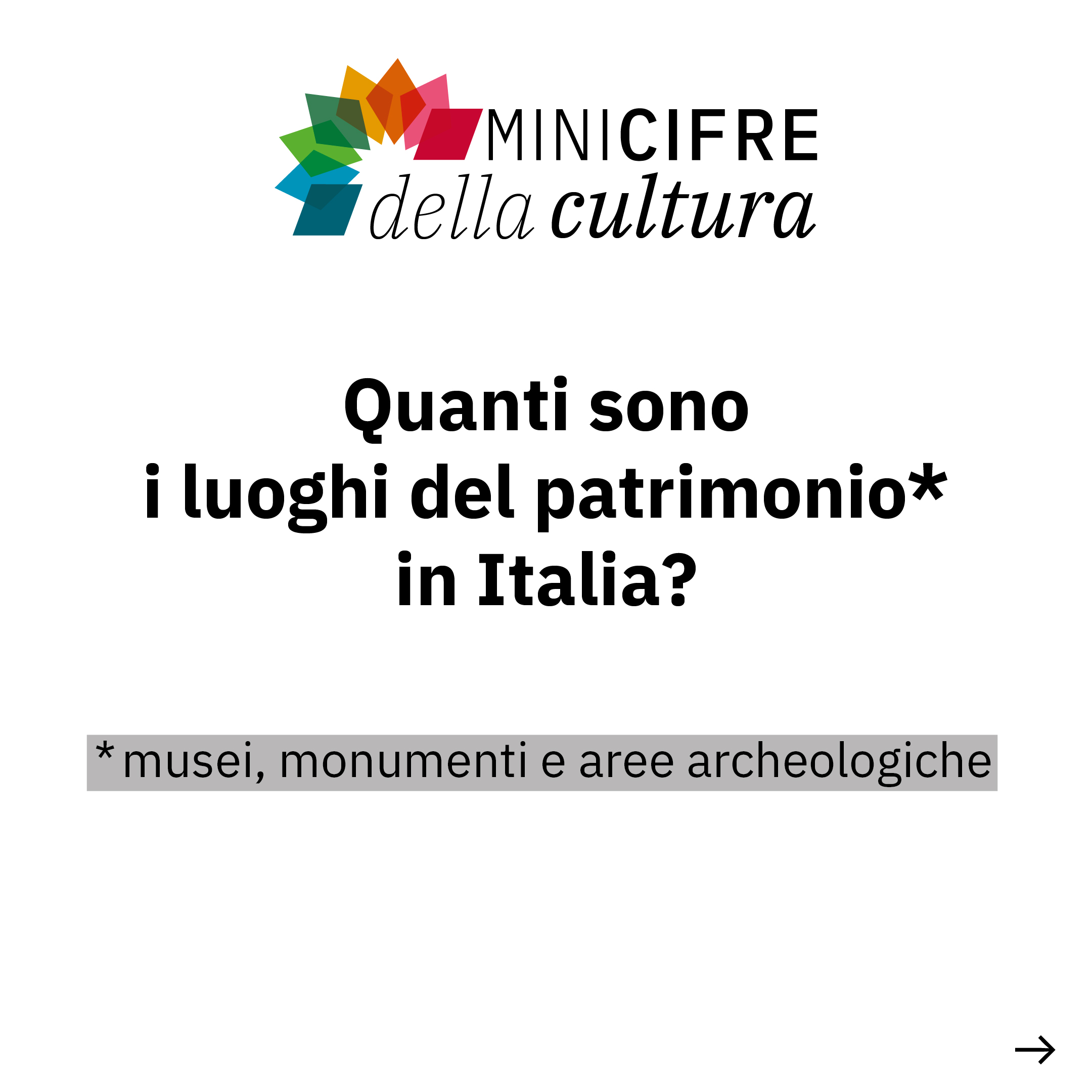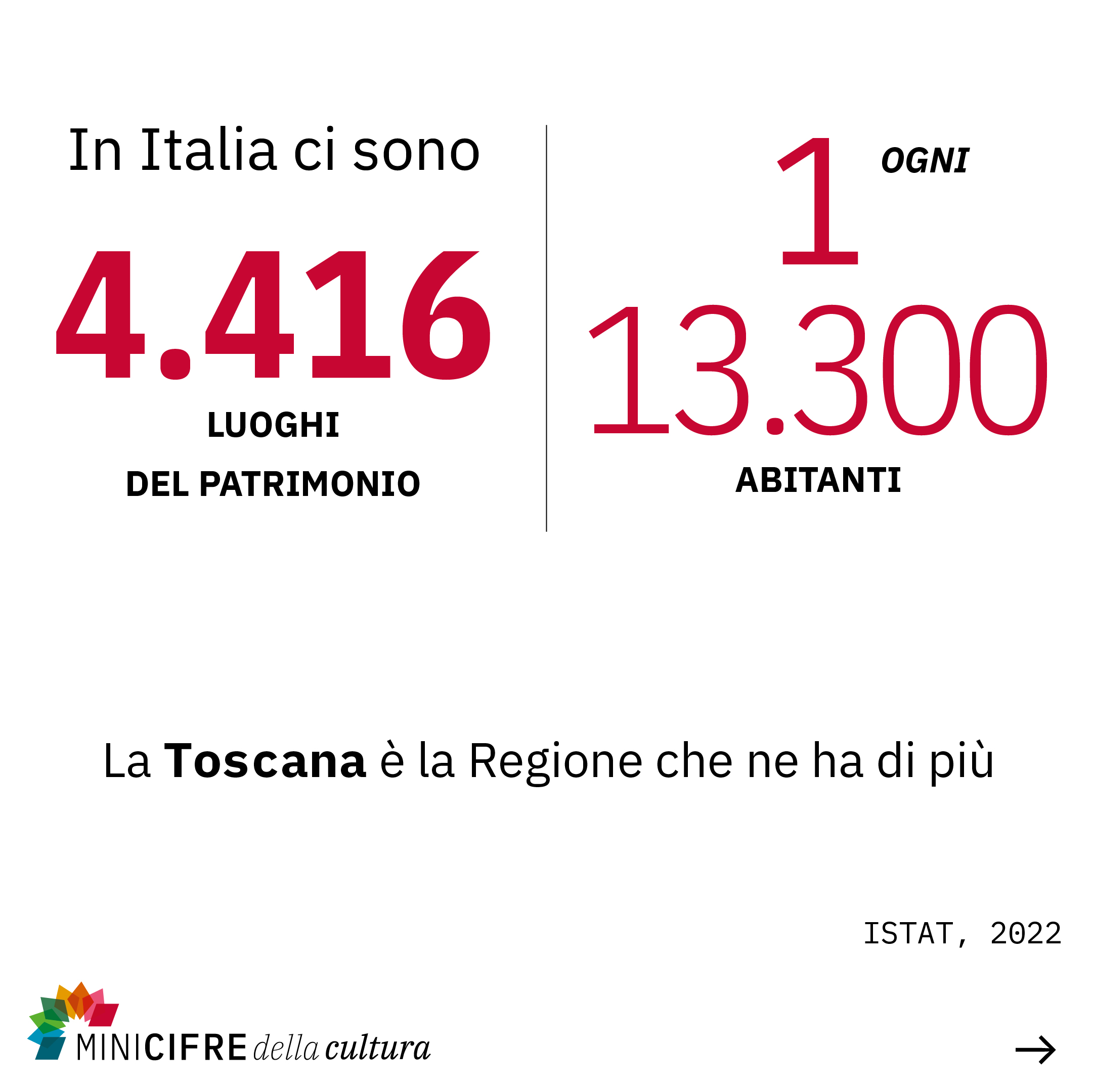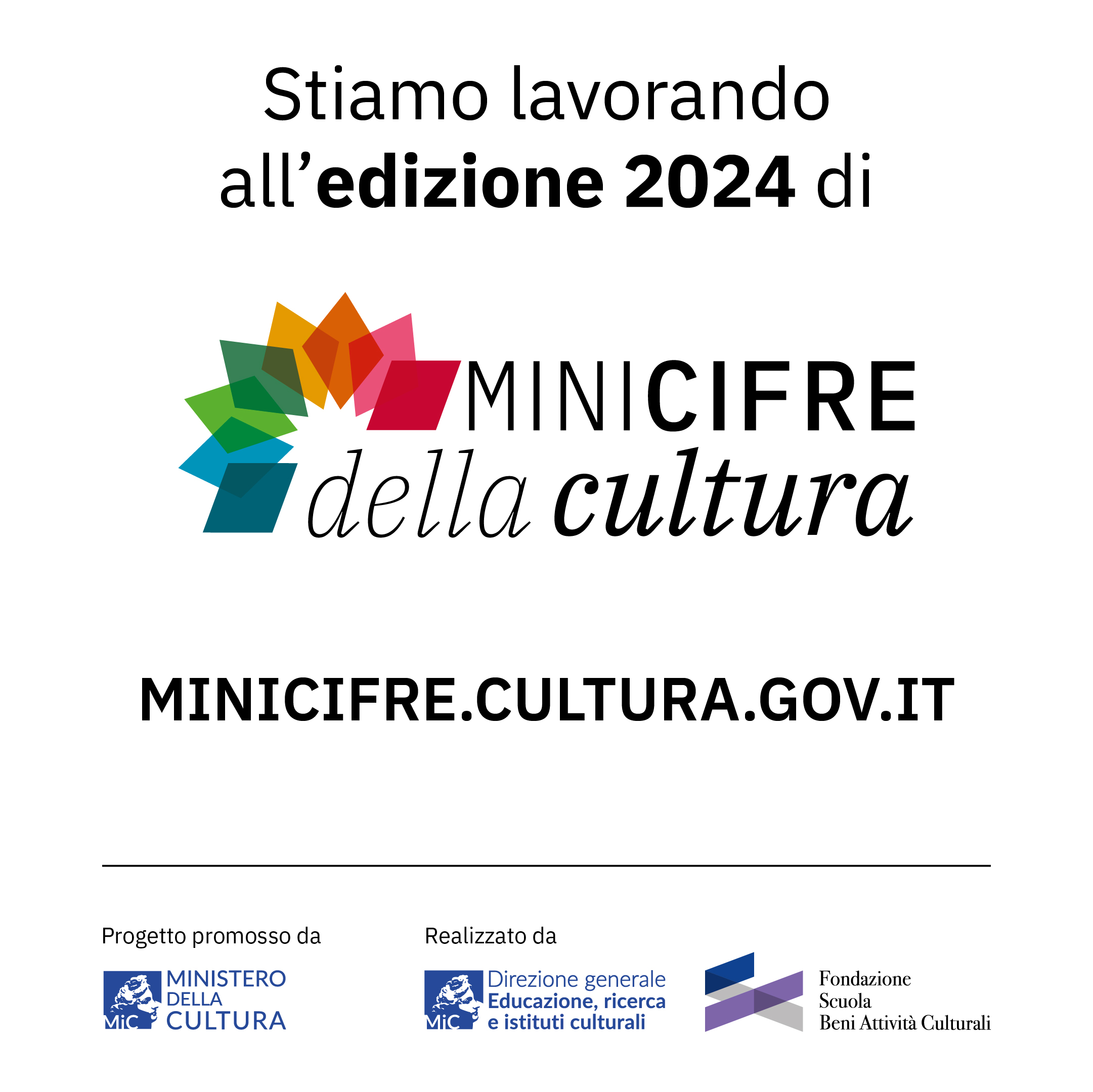
Minicifre della cultura è un progetto promosso dal Ministero della cultura, realizzato dalla Direzione generale Educazione, ricerca e istituti culturali del Ministero della cultura con la Fondazione Scuola dei beni e delle attività culturali.
Thanks to Minicifre della cultura, since 2023, is available a unique and reliable space for consulting the main statistical data on culture in Italy.
The Direzione generale Educazione, ricerca e istituti culturali of the Ministero della Cultura and the Fondazione Scuola dei beni e delle attività culturali have in fact started a systematic collection of data and quantitative information on the world of culture that present its progress and transformations, with the aim of providing a continuous return, on an annual basis, through a paper publication and a site web.
After Minicifre della cultura. 2023 edition – dedicated to the analysis of the five-year period 2018-2022 – Minicifre della cultura is in progress. 2024 editionwhich will be available in autumn, presenting the findings for the three-year period 2021-2023.
While waiting for the results of the new research, we publish monthly previews of data that offer a look at the cultural sector in Italy.
Places of cultural heritage: museums, monuments and archaeological areas
How many heritage places are there in Italy? Which region has the most museums, monuments and archaeological areas? How many visitors attended them?
In Italy there are 4,416 heritage places, public and private: 1 for every 13,300 inhabitants, as detected by Istat in 2022. Among these, the the majority are museums, collections and galleries (77%), followed by monuments and monumental complexes (16%), archaeological sites, areas and parks (7%)
The places surveyed are located 47% in Northern Italy, 28% in the Center and 25% in the South and Islands, with Tuscany recording the highest number (530) and Valle d'Aosta having the most more in relation to the resident population (39 museums, monuments and archaeological areas per 100,000 inhabitants).
Il 65% dei luoghi del patrimonio italiani è di proprietà pubblica, con una netta prevalenza di quelli appartenenti agli enti locali (1.993), in particolare ai Comuni, che sono cinque volte il numero di quelli statali (478).
Tra i musei, la maggior parte conserva e espone collezioni di archeologia (12%), seguiti da quelli dedicati all’etnografia e all’antropologia (10%), all’arte medievale (10%), all’arte moderna e contemporanea (7,5%). Meno rappresentati, nel totale, i musei storici (6,4%), quelli di storia naturale/scienze naturali (6%) e quelli religiosi (5%). Infine, le case museo/case della memoria rappresentano il 3% del totale, i musei di scienza e tecnica il 2% e quelli d’impresa l’1,5%.
E quanti sono stati i visitatori che li hanno frequentati? Nel 2022 i luoghi del patrimonio italiani hanno registrato circa 107,9 milioni di ingressi, un numero che si avvicina, ma non eguaglia, quello registrato prima della pandemia da Covid-19 (nel 2018, erano stati 129,9 milioni). Le regioni con il maggior numero di visitatori nel 2022 sono il Lazio – con circa 25,8 milioni di visitatori – and the Toscana – con circa 18,4 milioni. Proprio lì, hanno sede ben 7 dei 10 luoghi del patrimonio statali più visitati nel 2022, tra cui il Parco archeologico del Colosseo e le Gallerie degli Uffizi.
Another significant data is certainly that linked to cultural participation, again detected by Istat, and which illustrates an aspect of the cultural habits of Italians. In 2022 the percentage of the resident population in Italy who has visited a museum, an exhibition, an archaeological area or a monument at least once in the last year is equal to 21.7%, compared to the 29.6% recorded before the Covid-19 pandemic. Museums are especially affected by the decline (-9% between 2019 and 2022). Less intense, although significant, is the reduction in visits to archaeological areas and monuments, for which a decline of 6% was recorded between 2019 and 2022.
The next release is dedicated to cinema and cinema shows.
Read more
Discover Minicifre della cultura project on the DGERIC page.
Go to the website minicifre.cultura.gov.it





